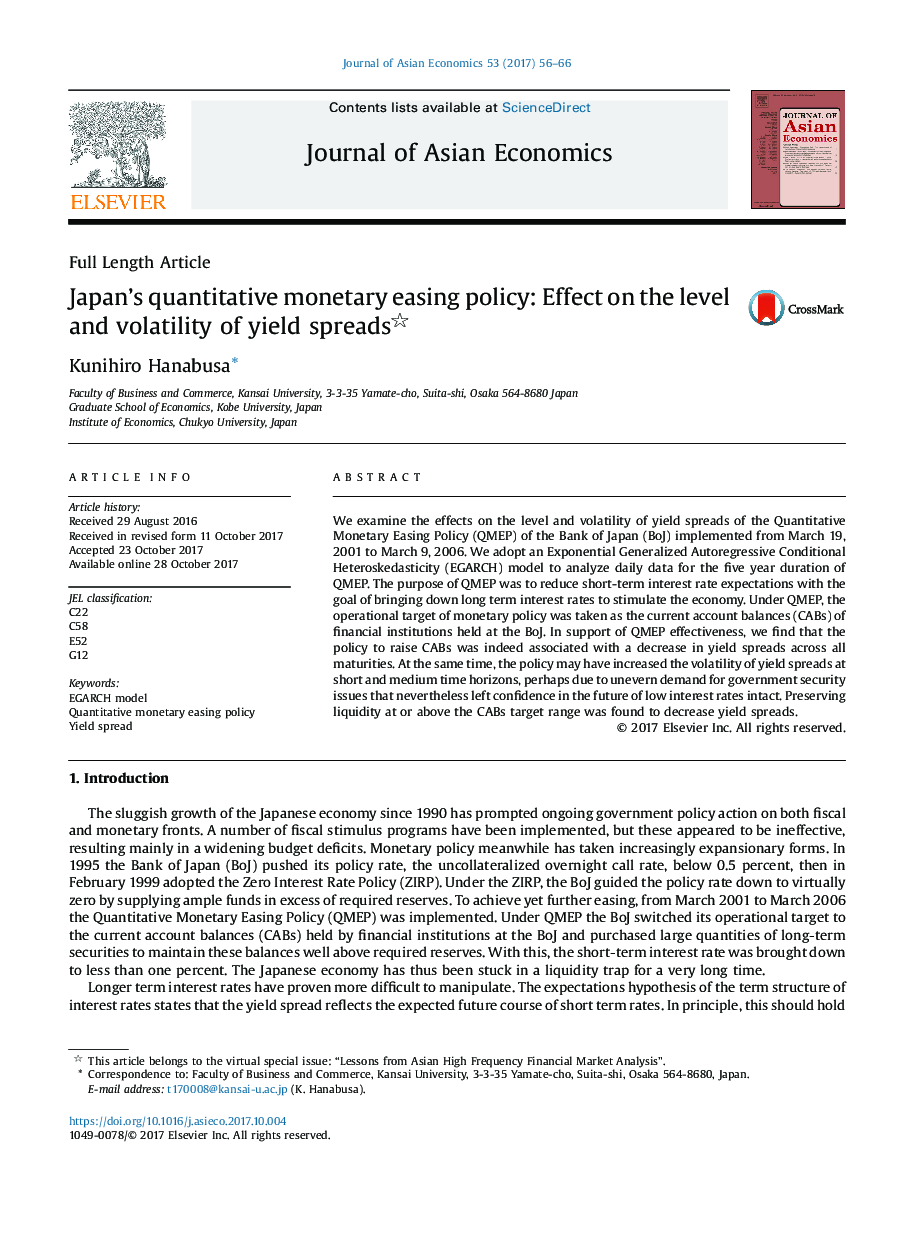| کد مقاله | کد نشریه | سال انتشار | مقاله انگلیسی | نسخه تمام متن |
|---|---|---|---|---|
| 7356434 | 1478239 | 2017 | 11 صفحه PDF | دانلود رایگان |
عنوان انگلیسی مقاله ISI
Japan's quantitative monetary easing policy: Effect on the level and volatility of yield spreads
ترجمه فارسی عنوان
سیاست کمی کاهش تسهیلات پولی ژاپن: تأثیر بر سطح و نوسان قیمت طلا
دانلود مقاله + سفارش ترجمه
دانلود مقاله ISI انگلیسی
رایگان برای ایرانیان
موضوعات مرتبط
علوم انسانی و اجتماعی
اقتصاد، اقتصادسنجی و امور مالی
اقتصاد و اقتصادسنجی
چکیده انگلیسی
We examine the effects on the level and volatility of yield spreads of the Quantitative Monetary Easing Policy (QMEP) of the Bank of Japan (BoJ) implemented from March 19, 2001 to March 9, 2006. We adopt an Exponential Generalized Autoregressive Conditional Heteroskedasticity (EGARCH) model to analyze daily data for the five year duration of QMEP. The purpose of QMEP was to reduce short-term interest rate expectations with the goal of bringing down long term interest rates to stimulate the economy. Under QMEP, the operational target of monetary policy was taken as the current account balances (CABs) of financial institutions held at the BoJ. In support of QMEP effectiveness, we find that the policy to raise CABs was indeed associated with a decrease in yield spreads across all maturities. At the same time, the policy may have increased the volatility of yield spreads at short and medium time horizons, perhaps due to unevern demand for government security issues that nevertheless left confidence in the future of low interest rates intact. Preserving liquidity at or above the CABs target range was found to decrease yield spreads.
ناشر
Database: Elsevier - ScienceDirect (ساینس دایرکت)
Journal: Journal of Asian Economics - Volume 53, December 2017, Pages 56-66
Journal: Journal of Asian Economics - Volume 53, December 2017, Pages 56-66
نویسندگان
Kunihiro Hanabusa,
